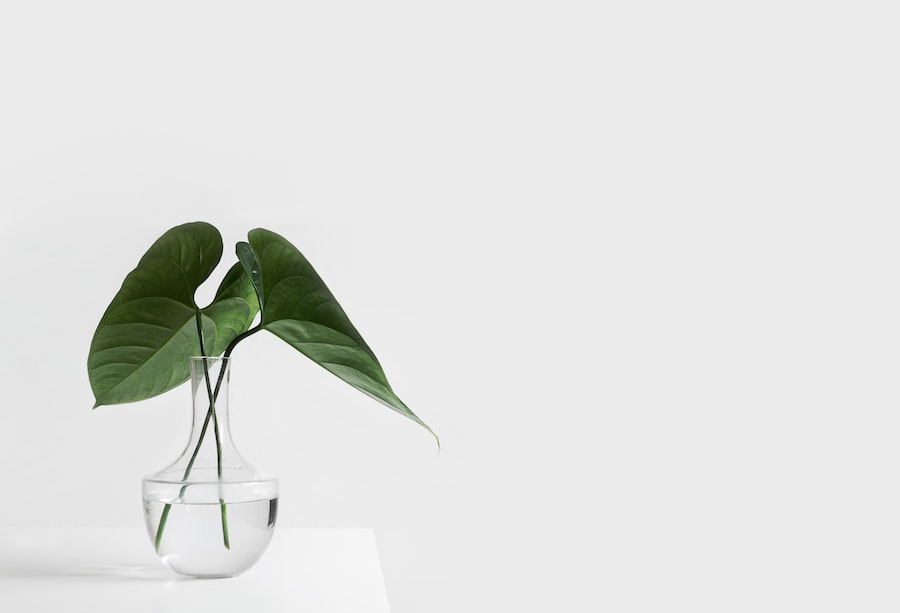Step-by-Step Guide: How to Plant a Prickly Pear Cactus in Your Garden

Prickly pear cactus, also known as Opuntia, is a unique and fascinating plant that has a long history and a wide range of benefits. This cactus is native to the Americas and has been used by indigenous cultures for centuries for its medicinal and culinary properties. It is characterized by its flat, paddle-shaped stems covered in spines, which give it its distinctive appearance.
The prickly pear cactus has gained popularity in recent years due to its ability to thrive in arid and desert-like conditions. It is a drought-tolerant plant that requires minimal water and maintenance, making it an excellent choice for those looking to add some greenery to their landscape without the hassle of constant care.
Key Takeaways
- Prickly pear cactus is a unique and beautiful plant that can provide both aesthetic and culinary benefits.
- Choosing the right location and soil for your prickly pear cactus is crucial for its growth and health.
- When selecting a container for your cactus, make sure it has proper drainage and is large enough for the plant to grow.
- Planting your prickly pear cactus requires careful handling and attention to detail, but can be done with a step-by-step guide.
- Proper watering, fertilizing, pruning, and pest control are essential for maintaining a healthy and thriving prickly pear cactus.
Choosing the Right Location for Your Prickly Pear Cactus
When choosing a location for your prickly pear cactus, it is important to consider the ideal growing conditions for this plant. Prickly pear cactus thrives in full sun and well-draining soil. It prefers sandy or rocky soil that allows excess water to drain away quickly, as it is susceptible to root rot if left in standing water.
In addition to the soil type, you should also consider the climate of your region. Prickly pear cactus is native to arid and semi-arid regions, so it is best suited for areas with hot, dry summers and mild winters. If you live in a colder climate, you may need to provide some protection for your cactus during the winter months.
Preparing the Soil for Planting
Before planting your prickly pear cactus, it is important to prepare the soil to ensure optimal growth. The soil should be well-draining and have a pH level between 6.0 and 7.5. If your soil is heavy or clay-like, you can improve drainage by adding organic matter such as compost or sand.
To prepare the soil, start by removing any weeds or grass from the planting area. Dig a hole that is slightly larger than the root ball of your cactus and loosen the soil at the bottom of the hole. Mix in some compost or sand to improve drainage and fertility. Place the cactus in the hole, making sure that the top of the root ball is level with or slightly above the soil surface. Backfill the hole with soil, firming it gently around the base of the cactus.
Selecting the Right Container for Your Cactus
| Container Type | Advantages | Disadvantages |
|---|---|---|
| Terra Cotta | Allows for air circulation, absorbs excess moisture | Can break easily, may dry out soil quickly |
| Plastic | Durable, retains moisture well | May not allow for proper air circulation, can become brittle over time |
| Ceramic | Stylish, comes in a variety of colors and designs | May not allow for proper air circulation, can be heavy and difficult to move |
| Glass | Allows for visibility of roots and soil, can be decorative | May not allow for proper air circulation, can break easily |
If you prefer to grow your prickly pear cactus in a container, there are a few factors to consider when choosing the right one. First, make sure that the container has drainage holes to allow excess water to escape. Prickly pear cactus is susceptible to root rot if left in standing water, so good drainage is essential.
The size of the container is also important. Prickly pear cactus has a deep root system, so choose a container that is at least 12 inches deep to allow for proper root development. Additionally, consider the material of the container. Terracotta or clay pots are a popular choice for cacti as they allow for better airflow and moisture evaporation.
Planting Your Prickly Pear Cactus: Step-by-Step Guide
Whether you choose to plant your prickly pear cactus in the ground or in a container, there are a few steps you should follow for successful planting.
1. Prepare the soil as mentioned in section

2. Dig a hole that is slightly larger than the root ball of your cactus.
3. Place the cactus in the hole, making sure that the top of the root ball is level with or slightly above the soil surface.
4. Backfill the hole with soil, firming it gently around the base of the cactus.
5. If planting in a container, fill the container with well-draining soil, leaving enough space at the top for watering.
6. Water the cactus thoroughly after planting to help settle the soil and remove any air pockets.
Watering and Fertilizing Your Prickly Pear Cactus
Prickly pear cactus is a drought-tolerant plant that requires minimal water once established. It is important to water your cactus sparingly, allowing the soil to dry out between waterings. Overwatering can lead to root rot and other issues.
During the growing season, water your prickly pear cactus once every two to three weeks, depending on the weather conditions. In hot, dry climates, you may need to water more frequently. Be sure to water deeply, allowing the water to penetrate the root zone.
Fertilizing is not necessary for prickly pear cactus, as it is adapted to nutrient-poor soils. However, if you choose to fertilize, use a balanced fertilizer with a low nitrogen content. Apply the fertilizer sparingly in the spring or early summer, following the manufacturer’s instructions.
Pruning and Maintenance of Your Prickly Pear Cactus
Pruning is an important aspect of maintaining your prickly pear cactus and promoting healthy growth. Pruning helps remove dead or damaged stems and encourages new growth. It also helps maintain the shape and size of your cactus.
To prune your prickly pear cactus, start by wearing thick gloves and using long-handled pruning shears. Carefully remove any dead or damaged stems by cutting them back to healthy tissue. Avoid cutting into the main stem or removing too much foliage at once.
In addition to pruning, regular maintenance is important for keeping your prickly pear cactus healthy. This includes removing any weeds or grass that may compete with the cactus for nutrients and water. It is also important to monitor for pests and diseases and take appropriate action if necessary.
Protecting Your Prickly Pear Cactus from Pests and Diseases
Prickly pear cactus is generally resistant to pests and diseases, but there are a few common issues to watch out for. One of the most common pests that affect prickly pear cactus is the cochineal scale insect. These small, oval-shaped insects attach themselves to the cactus and feed on its sap, causing yellowing and wilting of the stems.
To prevent cochineal scale infestations, regularly inspect your cactus for signs of these pests and remove them by hand or with a strong stream of water. If the infestation is severe, you may need to use an insecticidal soap or horticultural oil to control the population.
Other pests that may affect prickly pear cactus include aphids, mealybugs, and spider mites. These can be controlled using similar methods as mentioned above.
Harvesting and Using Prickly Pear Fruit
One of the main benefits of growing prickly pear cactus is the delicious fruit it produces. Prickly pear fruit, also known as tunas, are oval-shaped and come in a variety of colors, including red, purple, and yellow. They have a sweet, juicy flesh that can be eaten raw or used in a variety of culinary applications.
To harvest prickly pear fruit, wait until they are fully ripe and easily detach from the plant when gently twisted. Use thick gloves or tongs to handle the fruit, as they are covered in small spines that can cause irritation.
Once harvested, prickly pear fruit can be used in a variety of ways. They can be eaten raw, added to salads or smoothies, or used to make jams, jellies, and syrups. The fruit can also be juiced and used as a natural dye for fabrics and other materials.
Enjoying the Beauty and Benefits of Your Prickly Pear Cactus
In conclusion, growing prickly pear cactus can be a rewarding experience. Not only does it add beauty to your landscape with its unique appearance, but it also offers a range of benefits, from its ability to thrive in arid conditions to its delicious fruit.
By choosing the right location, preparing the soil, and providing proper care, you can enjoy the beauty and benefits of your prickly pear cactus for years to come. Whether you choose to plant it in the ground or in a container, this versatile plant is sure to bring joy and fascination to your garden. So why not give it a try and see for yourself the wonders of the prickly pear cactus?
If you’re looking for expert advice on how to plant a prickly pear cactus, look no further than Lawn World. Their comprehensive guide provides step-by-step instructions and valuable tips to ensure your cactus thrives in any garden or landscape. For more information, check out their article on planting prickly pear cacti here. Whether you’re a seasoned gardener or a beginner, this resource will help you successfully cultivate these unique and resilient plants.



